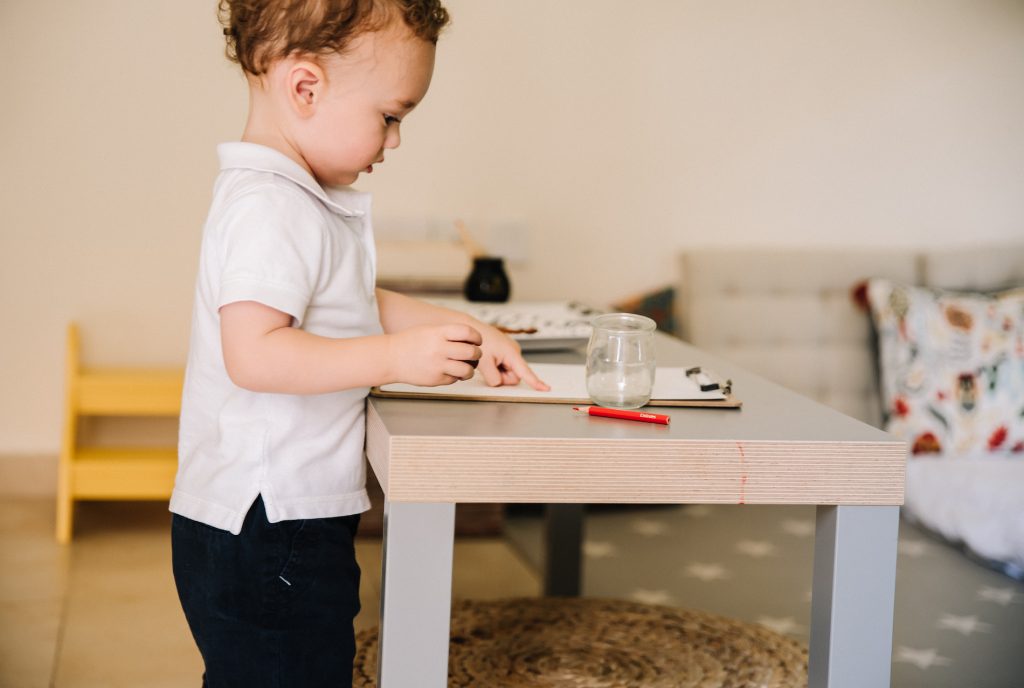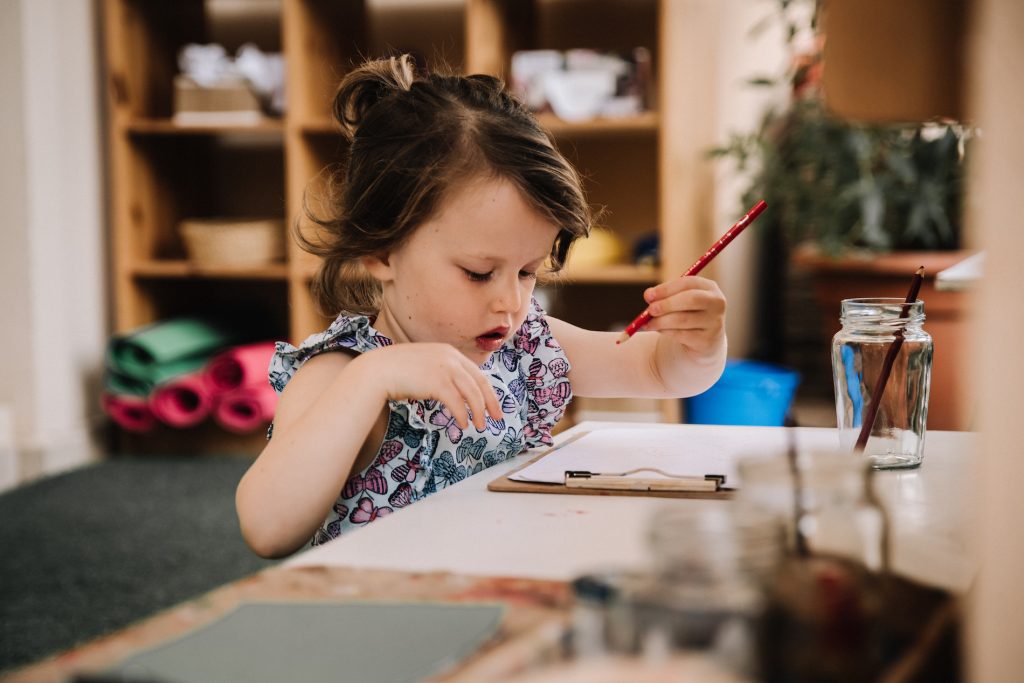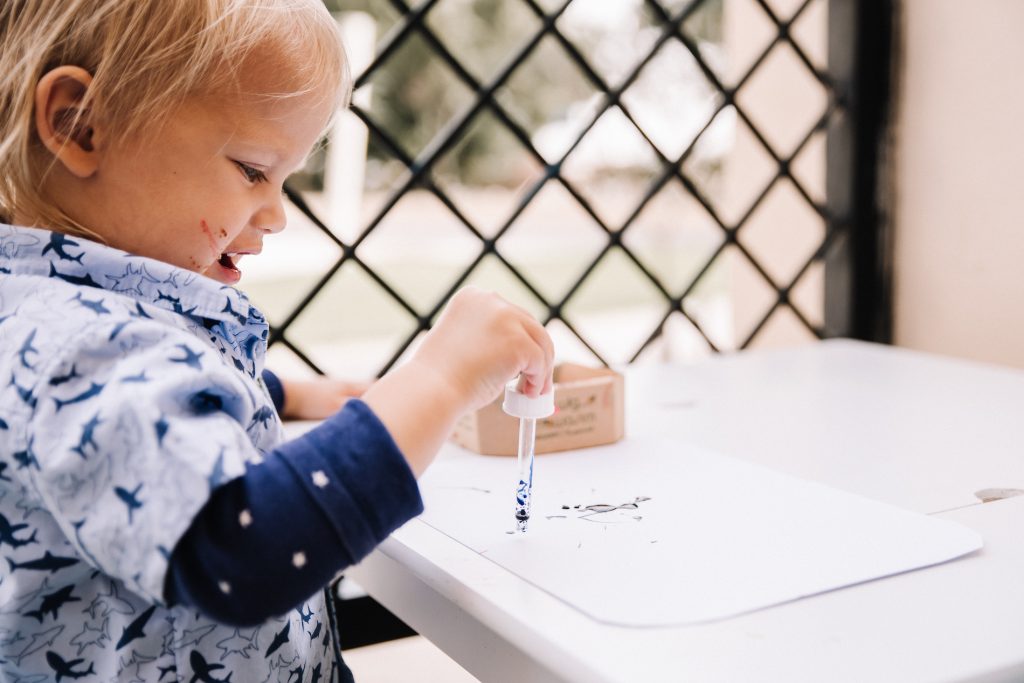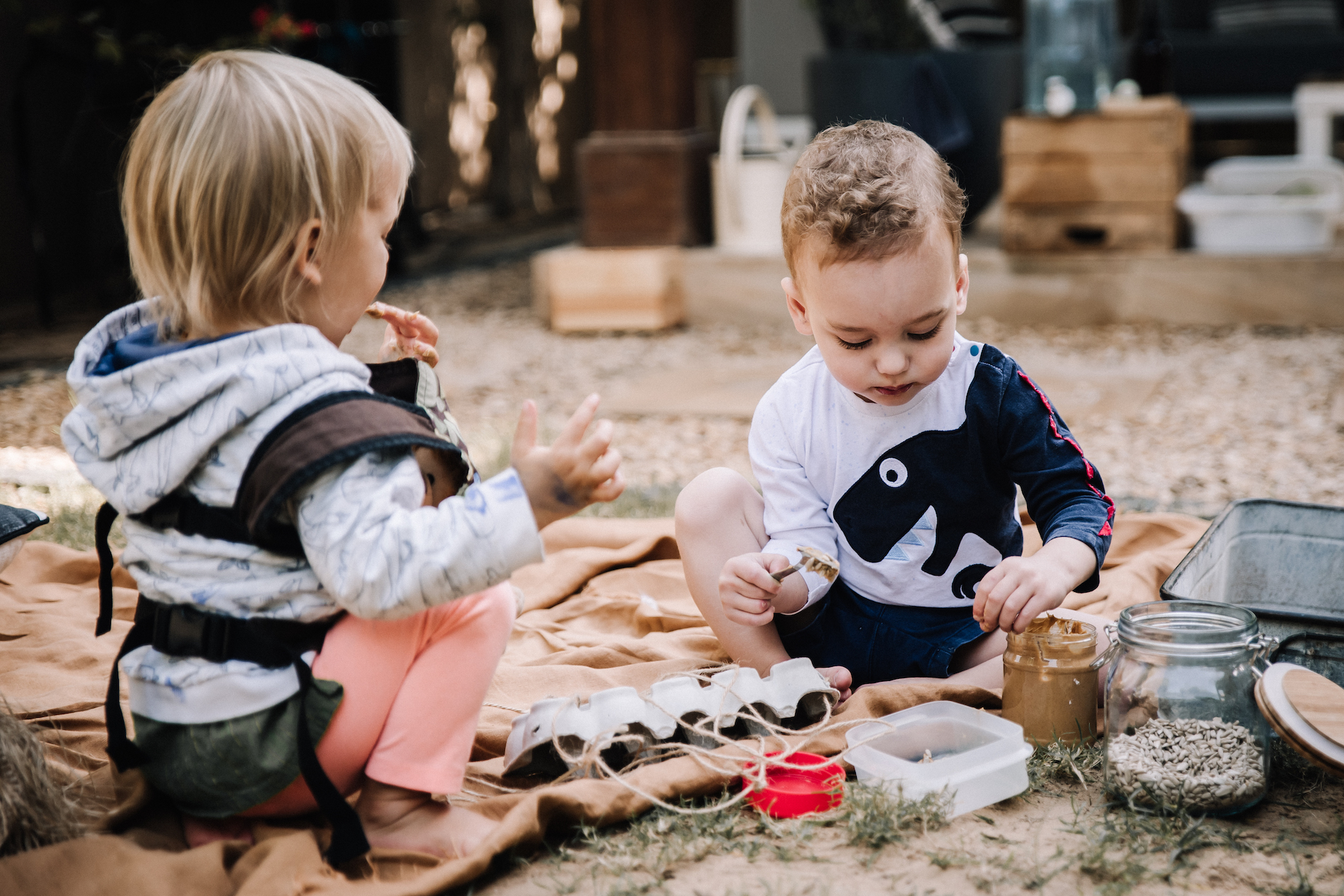Creativity with young children is a beautiful path of discovery for both you and them. Through a child’s creativity, we have a window into their world. They draw or paint or mould what is on their mind, what they are trying to make sense of, or what interests them.
It is an unfiltered and pure method of communication, and reveals as well as releases what is happening inside their head.
Creativity is their way of expressing their feelings and thoughts, which they do not yet have the language skills to convey. So, it is vital that we give them the freedom and opportunity to do this limitlessly during their early years.
Our first step towards supporting our children’s creativity is to put aside our ideas of what a child’s creativity “should” be. Even more important is to put aside our memories of creativity from school when we were perhaps made to all paint or draw the same thing at the same time – how uninspiring!
All the child needs is something to draw on and something to draw with, and all we need to do is to give them the uninterrupted time that they need to create their art.

Making creativity accessible
Have art materials freely available from when the child is sitting up comfortably. (Any time from roughly six months onwards). A very simple set up of a clipboard with some sheets of paper on it and one crayon is what they need.
Start with just one colour at a time; one of the three primary colours. The clipboard holds the paper firmly in place so they can focus on drawing.
Initially, they are exploring colour and the transferral of that colour onto paper, so it is imperative that they explore colour one by one, following the primary then secondary colours.
Have a designated place on the shelf where this clipboard belongs, and always replace it there, so once the child is crawling, she will be able to access it herself.

Responding to your child's creativity
Once they are crawling or walking they will undoubtedly bring their art to you to show you. They already know that it is beautiful, that it is amazing and that they are so clever for drawing, so say something meaningful to them instead.
As soon as they show you or give you their artwork get down to their eye level straightaway. Thank them sincerely, and take a moment to really see what they have drawn. They truly want you to be interested in what they have done, so show genuine interest. Ask questions and point out different parts of the picture – “What were you thinking about when you drew this?” “How did you manage to create this effect here?” A simple “Tell me about your picture” encourages language and gives them confidence in your true interest and delight in their work.
Think about engaging with them as much as you can. Listening to them describe their art gives us the opportunity to stop and see our children as they are, in this moment.
Giving praise rather than showing genuine interest is not appropriate as our children naturally want to please us. They need our approval (as much as the air that they breathe) so praising their work without genuine interest and presence on our part results in the child being creative for “us” rather than for themselves. They draw a picture for the compliment, for our pleasure, rather than for their own.
Of course, we don’t need to tie ourselves up into knots about saying the right thing. A genuine “Oh my goodness! That’s beautiful!” may slip out from time to time! But it is important to check in with ourselves and realise that we are saying ‘Well done!’ or ‘That’s beautiful!’ or ‘You’re so clever!’ because we are too busy to engage with them properly.
If we are giving a compliment as a quick fix so the child will be happy then toddle off again, leaving us to do our busy and important adult stuff, then we might need to address this.
Some days they may draw just one picture and other days about twenty pictures! Every picture is a gateway into their world. What a beautiful gift it is when their expression is so free and uninhibited as it is in childhood.
Their art tells you the things that they cannot verbalise. Let this process of supporting their creativity flow so that their emotions and thoughts can flow too.
You can ask them if their picture has a title. Always ask where on the piece of paper they would like you to write the title, the date, their name. Both of my children are very specific with their preference on these points.
Have a simple system for keeping their art. At the beginning of their creative journey you may want to keep everything 😍, however depending on your storage space available this may need to be slimmed down!
Set aside at least one picture per week, marking the date on each one, and as you look back through them you will see their progression.
Offering a variety of creative experiences
Provide an easel as well as paper and crayons for drawing. Place the easel in your outdoor space if you have one, and again stick to one colour of chalk to start with.
Painting is delightful fun, but can get messy, so it needs a little supervision. The setup for painting should be readily available, with the paint close by, but out of their reach so they can just ask for it when they want to work with it.
As your child grows you can offer experiences of several shades of the same colour, or different mediums of the same colour. For example, a wax crayon, pencil crayon, chalk, and paint. Let them explore effects on different papers, sketch paper, watercolour paper, acrylic paper.
Once they show an interest in other colours introduce the secondary ones. Let them choose two primary colours and, using paint, show them the gradual process of slowly mixing the two paints together, bit by bit, in order to create a third colour. This is extraordinary for them!
Adding white to one of the primary colours to create different shades is another way to play with colour and discover together.
Above all, enjoy the process of this enriching experience with your child. Have the relevant art materials freely available and take time to draw or paint when you are together, so your child sees you creating something just for the pleasure of creating.

Five steps to allowing your child's creativity to blossom:
- See your child’s creativity as a window into their world, their self-expression.
- Give your child lots of time and space to be freely creative. Creativity should be child-led, unstructured and unscheduled.
- Ensure that the materials for early mark-making are always available and accessible to your child from when they are sitting comfortably (around six months). Basic materials are a small clipboard, sheets of paper and a primary colour crayon.
- Provide a range of mediums on which to create, such as an easel with chalk, and different kinds of paper for painting with different effects.
- Show interest rather than give praise: Engage fully in your child’s creative process by shifting the focus away from your feelings and instead be in the moment with them, encourage a dialogue about their creation.
Similar Posts
- 17 September 2019 00:32
- 11 September 2019 18:17
- 11 September 2019 17:50




